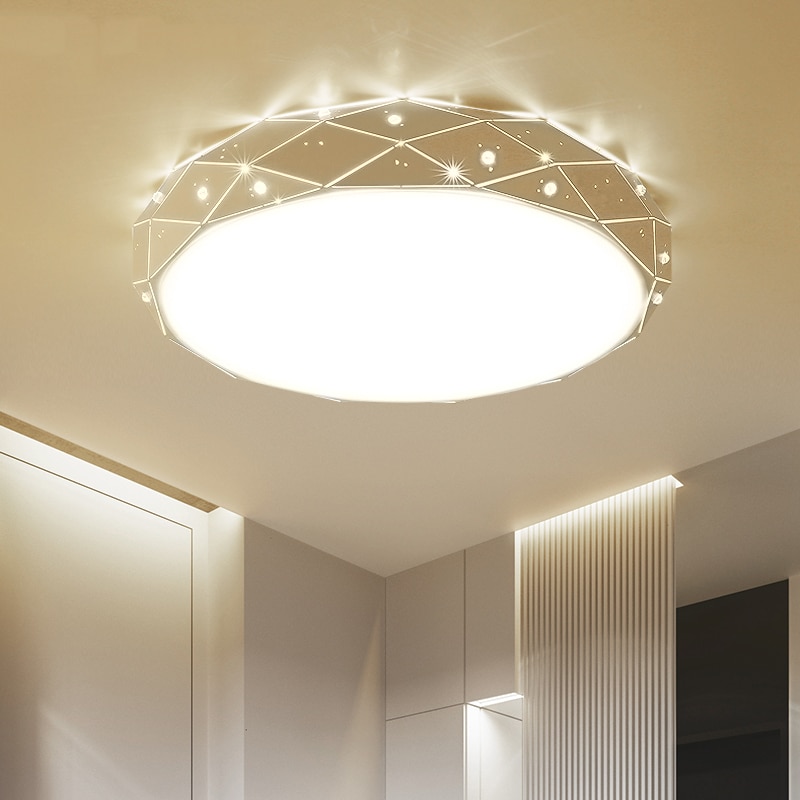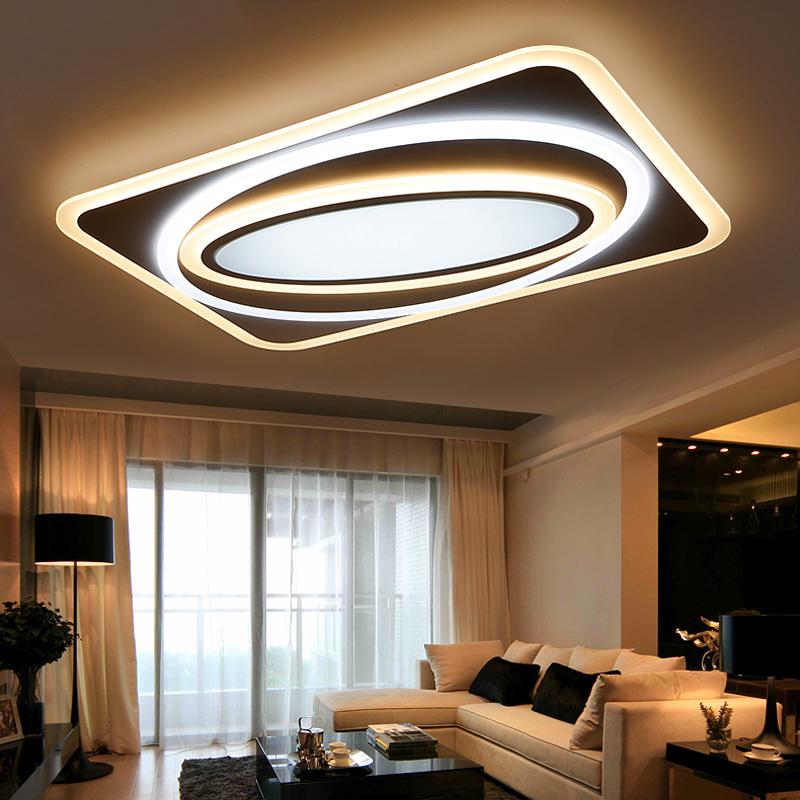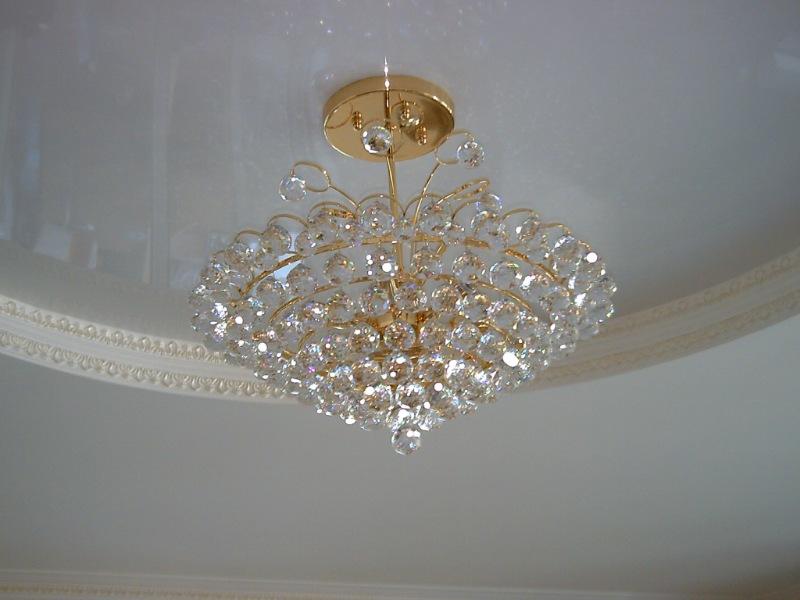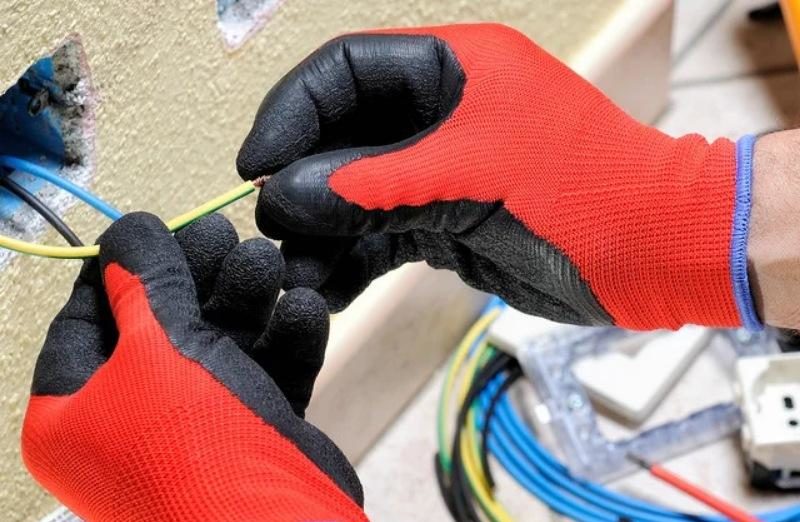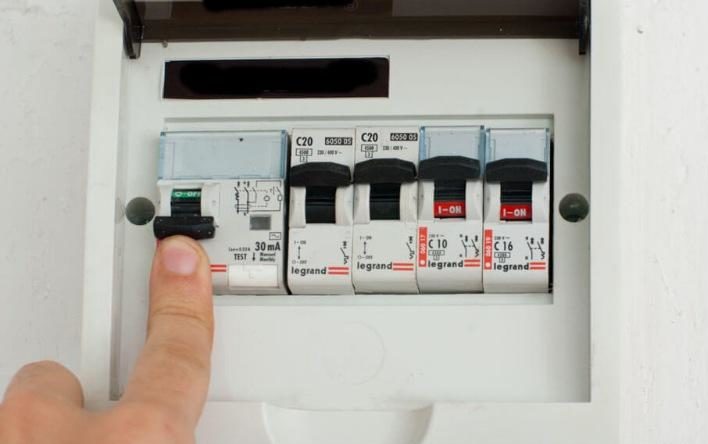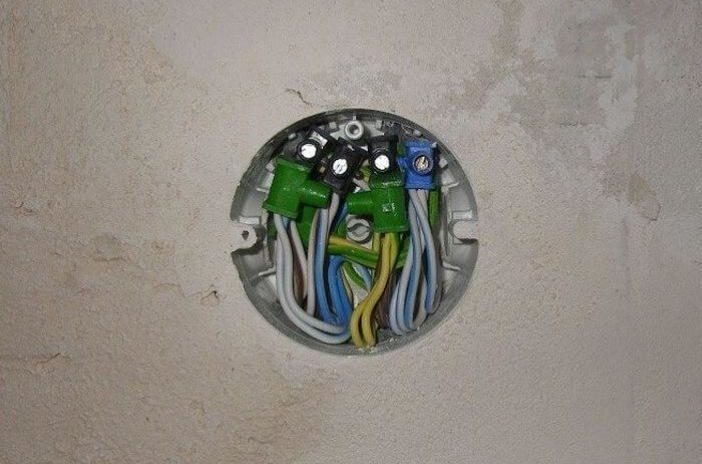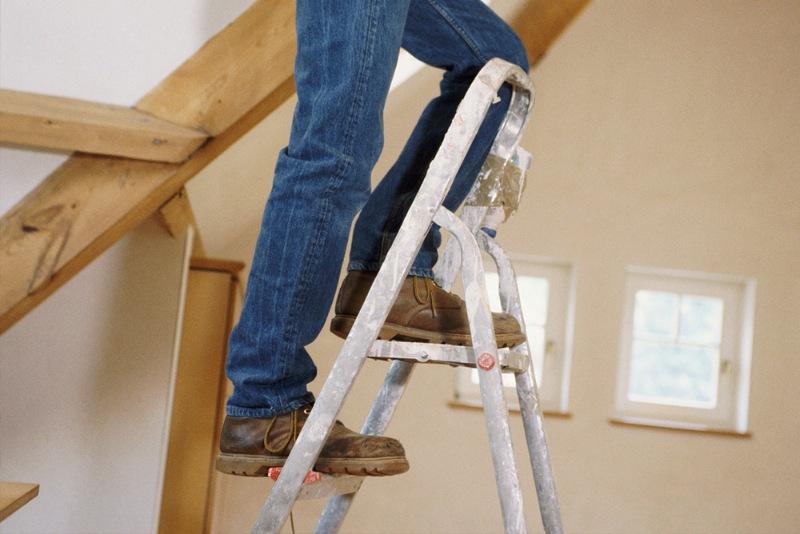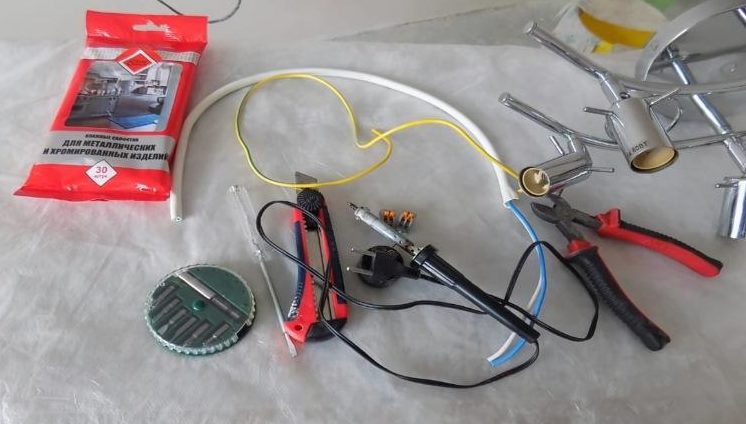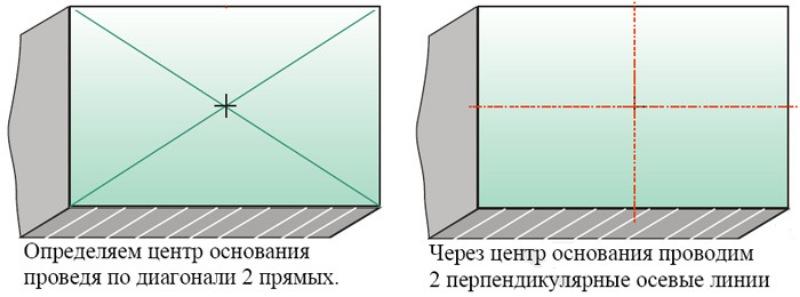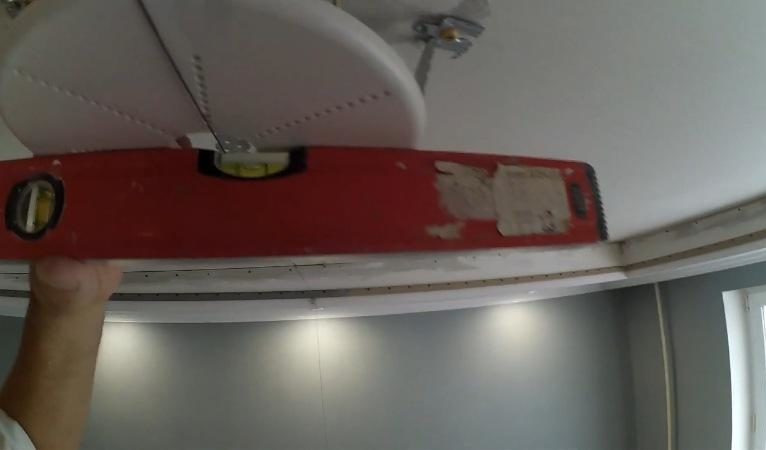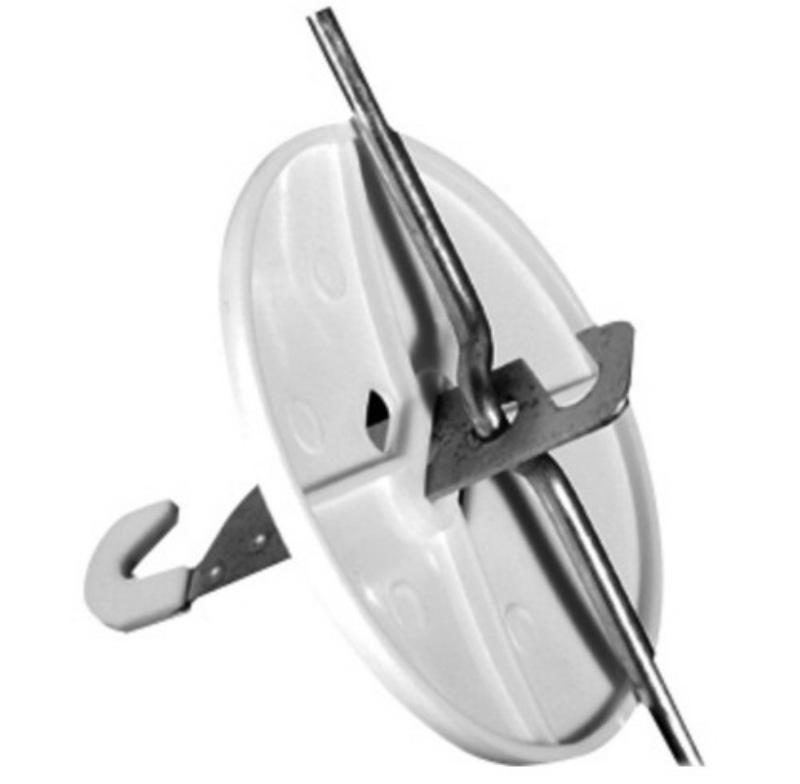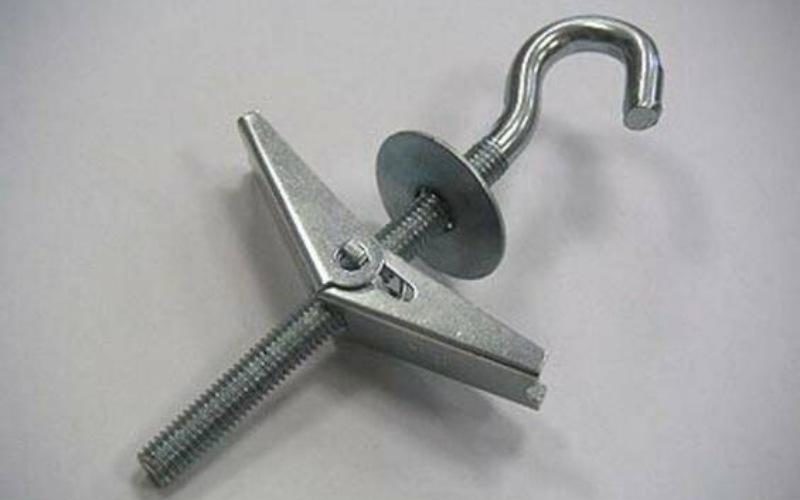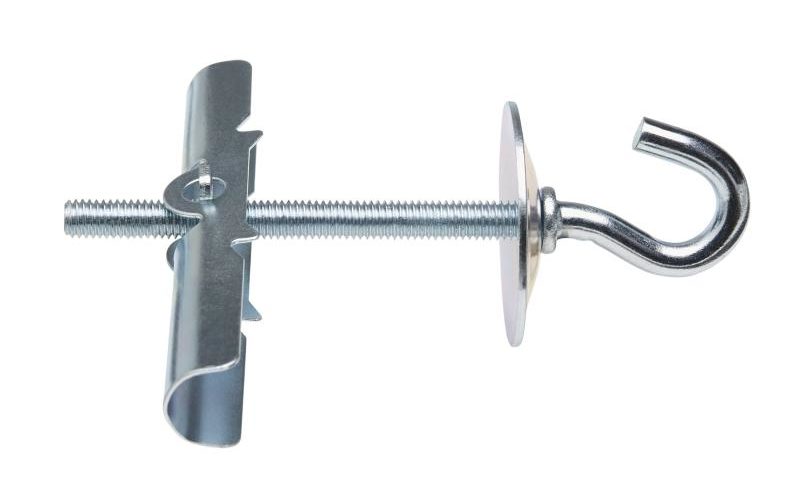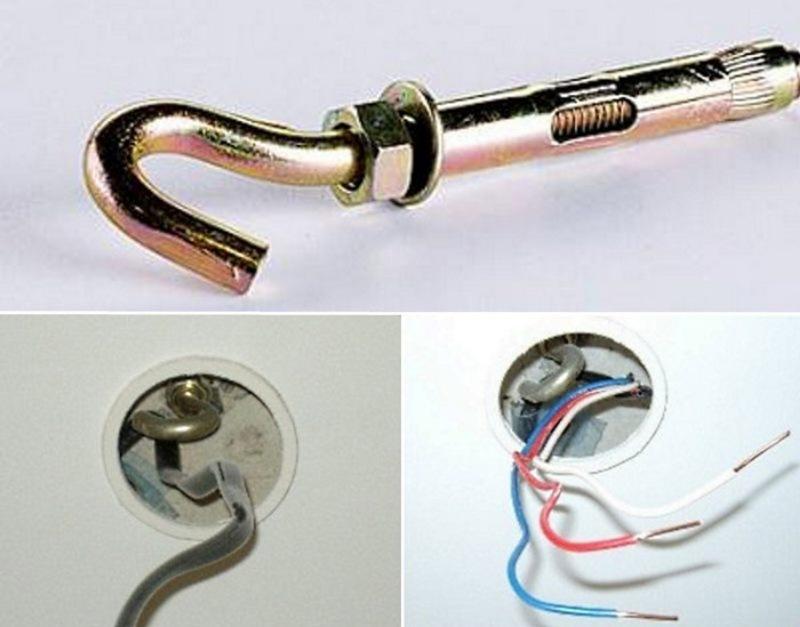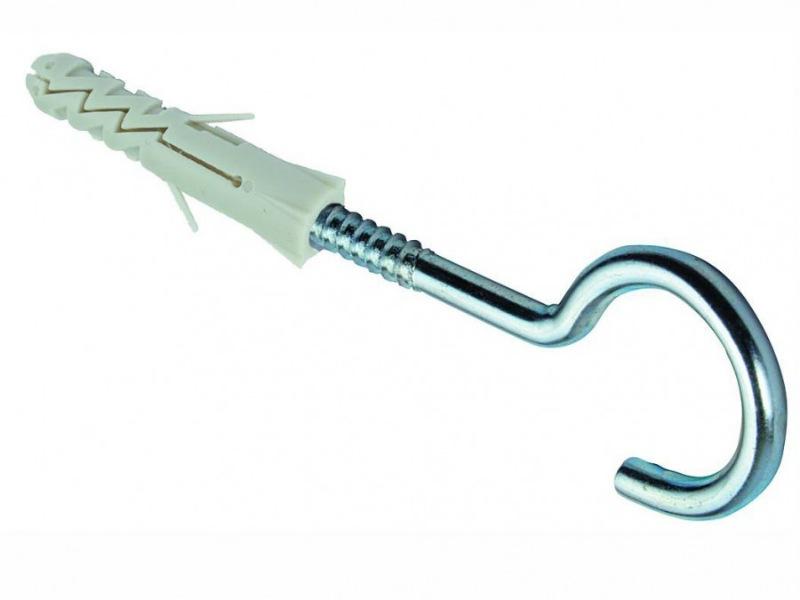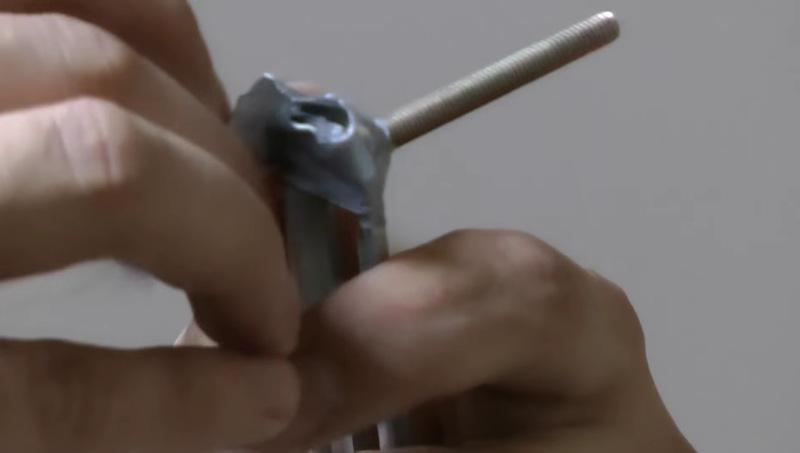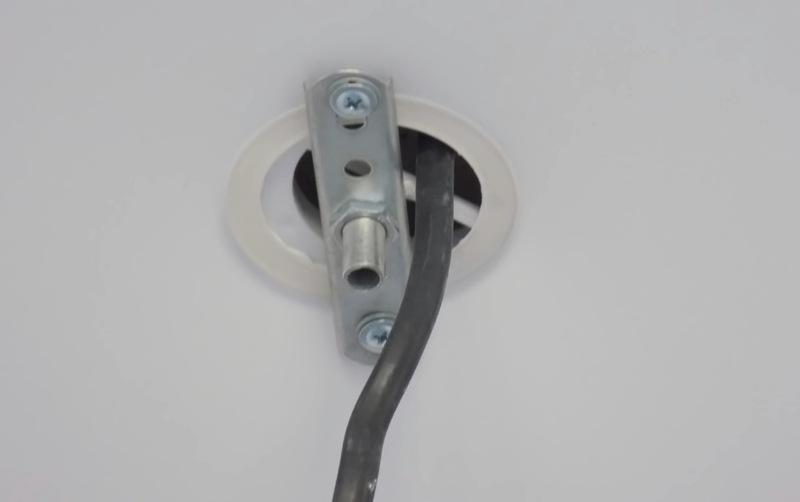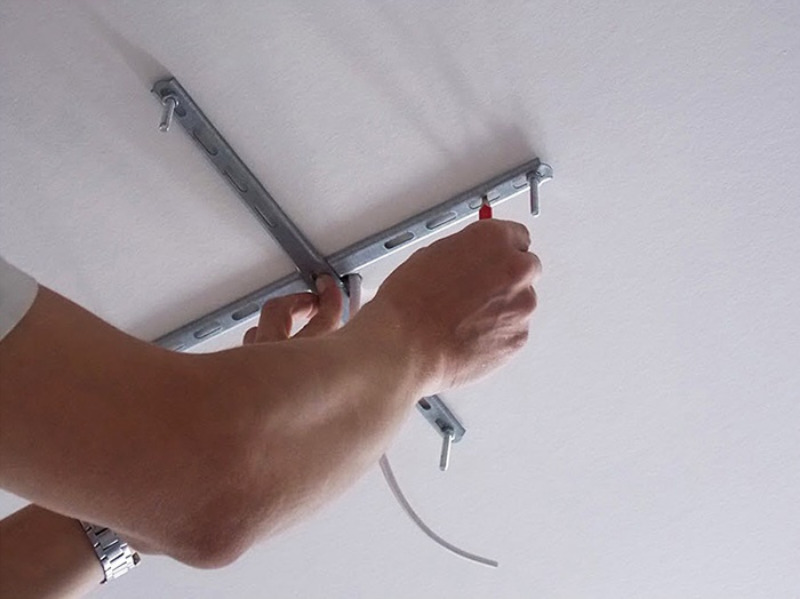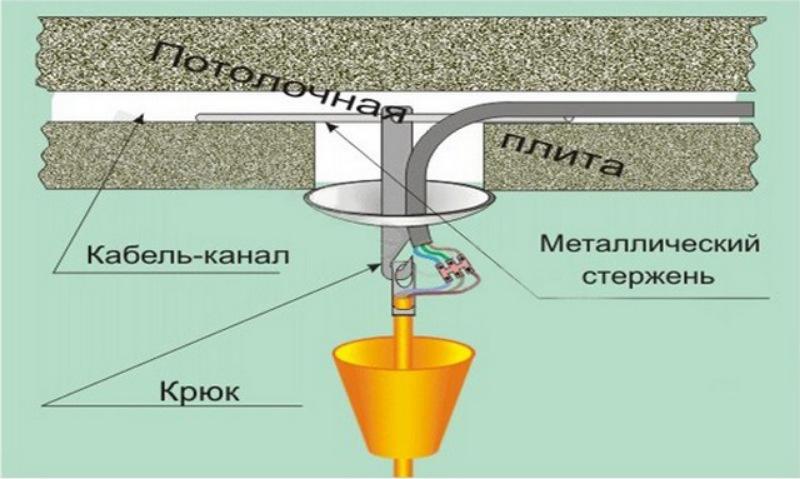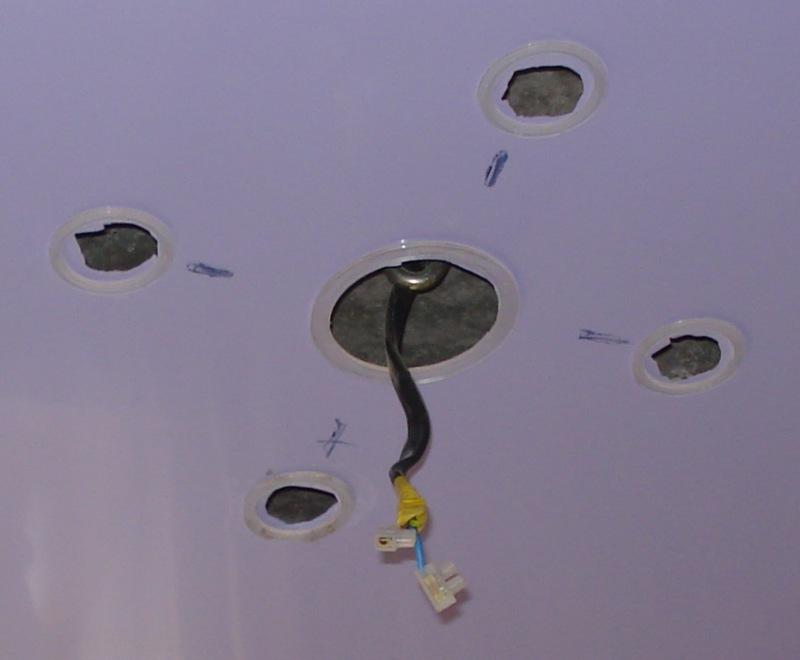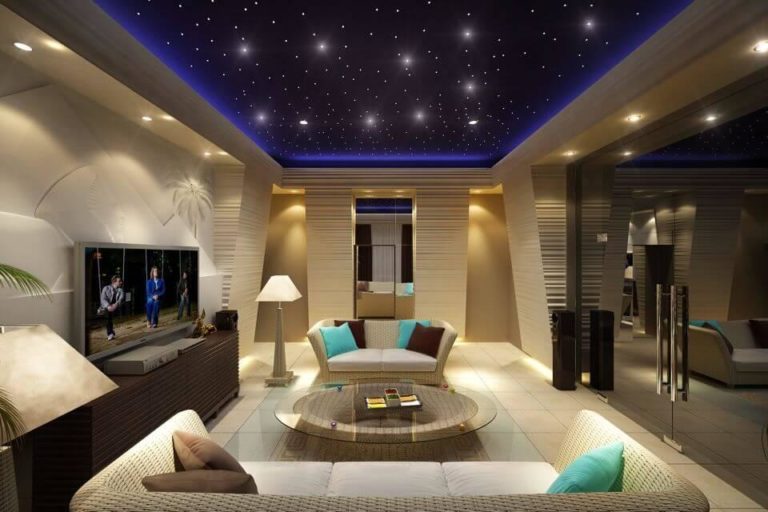Installing a chandelier on a stretch ceiling
Stretch fabric greatly complicates the installation of lighting fixtures and without knowing some of the nuances, most ordinary people who try to work with it on their own, make unforgivable mistakes. However, you can not involve professionals from the outside, if you can do everything yourself. Before you hang a chandelier on a stretch ceiling, it is enough to study the materials presented in the article and just follow the instructions.
How to choose a chandelier on a suspended ceiling
The first difficulty faced by consumers is the choice of model. For stretch ceilings most often apply spot lighting in the form of spotlights, but as time has shown, classic chandeliers have remained in the trend and perfectly combined with spotlights. Since the canvas deforms when heated, the only nuance to consider when choosing a model is the maximum temperature emitted by the device at the peak of work. Accordingly, if the chandelier is planned to use incandescent or halogen lamps that produce more than 200°C, then you need to choose such samples, the sockets of which are located at a distance of at least 30 cm from the ceiling. In this case, the luminaires of the pendant type will be suitable.
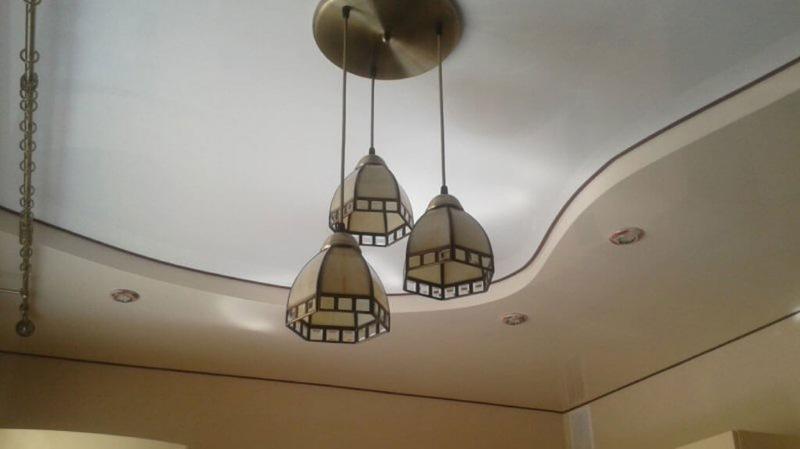
Temperature restrictions do not apply to relatively cool LED or fluorescent light sources, and burnout is most often subject to fabric cloth, although in this regard, it all depends on the manufacturer.
LED chandeliers are now the best solution for stretch ceilings. Their choice is possible in two variants:
- overheadWhen the chandelier is mounted close to the suspended ceiling, and the light bulbs are placed directly on the base of the fixture.Suitable for rooms with low ceilings, and given that the gap between the cloth and the main ceiling reduces the already limited space, this type of in such cases, the most common.In terms of aesthetics, plates are more suitable for design styles such as modern or high-tech.
- suspended - when the plafond or a group of them are attached to the base by means of a rod, flexible armature, chains and cords.Suitable for both classic and ultra-modern designs, depending on the design of the particular model.
Fluorescent fixtures are also practiced, but their range is not dazzling in variety, and is represented mainly by flat chandeliers.
The process of installing a chandelier
Preparing
The fixing principle is partially or fully described in the manual of the appliance. However, firstly, not all aspects are clear to the ordinary consumer, with no experience in installing such appliances, and secondly, these manuals say little about safety. Regarding the latter, three main rules should be taken into account:
- All manipulations with electrical wiring are carried out in protective rubber gloves and a building mask. The fact is that during the laying of the electrical system there may have been gross violations, or the building is connected to the emergency the building bypassing the circuit breaker. In these cases, electrical injuries are inevitable.Protective equipment can be purchased at any hardware store.
- Even with the use of dielectric gloves, you must in any case turn off the power switch on the meter to avoid a short circuit.The method is relatively reliable, but for the operation of power tools such as a drill or punching machine will have to run an extension cord to the neighbors or an independent power source.
- If you plan a long-term repair with intervention in the electrical wiring, it is better to disconnect a separate room in the junction box. In this situation, temporary lighting and electrical tools are connected by carrying from the next room, and all work with the cable, including its replacement can be carried out without fear. In any case, before carrying out the work Make sure that the power supply is de-energized in the network with a screwdriver indicator or any household appliance plugged into the socket.It is better to entrust the disconnection of the room to a specialist.
- If you will need a stepladder to access the fixture mount, it is placed so that you can carry the center of gravity forward, resting your knees on the top steps. It is better if it is held by a second person to whom you can hand tools and parts.When a table or chair serves as a stepladder, then the most stable and sturdy piece of furniture should be taken accordingly.
If the upcoming work involves perforating the supporting structures and the main concrete slab, it is necessary to get acquainted with the plan of the room and find out exactly where there is a hole with an electrical cable. Damage to electrical wiring with a drill, even when the power is off, is fraught with the risk of replacing a section of internal wiring.
The choice of tools
To install almost any chandelier on a stretch ceiling, you will need:
- wire cutters;
- knife;
- screwdriver;
- Phillips screwdriver;
- pliers;
- An impact drill with a concrete drill bit or a hammer drill;
- Fasteners appropriate to the situation - self-tapping screws, dowels, anchors, hooks, etc;
- soldering iron with tin and flux;
- dielectric rubber gloves, mask or goggles;
- A cable to add to the cable;
- stepladder.
Read also: Assembly and connection of the chandelier
Before installing it is necessary to choose a place for fixing the light fixture. Most often the chandelier takes its place in the center of the room, which is determined by means of two paint threads stretched diagonally between the corners or between the middle of the sides. The point of intersection is considered the center of the room.
Having prepared the tools, you must set up the stepladder and disconnect the power to the building or room.
Although the rules require you to disconnect the circuit breaker, many people limit themselves to the circuit breaker, as ideally it breaks the phase, thus de-energizing the further section of wiring. However, if you use the wrong wiring, the breaker key breaks the zero and one contact on the chandelier remains energized.
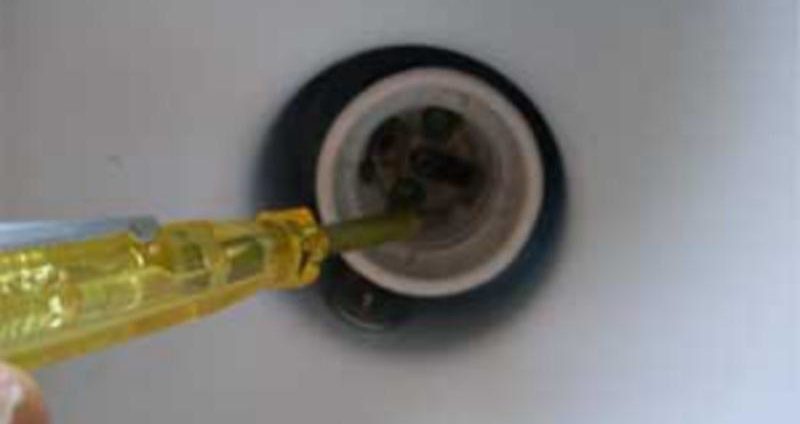
Attachment options
Prior to stretching the ceiling, an embedded platform is installed at the point of installation. Its presence is mandatory for most varieties of fastening systems.
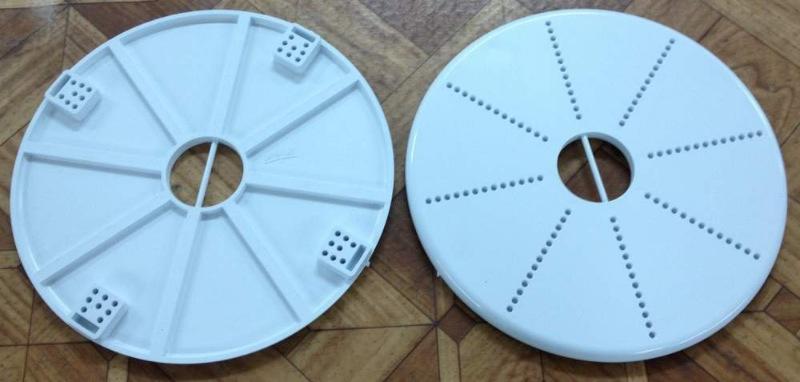
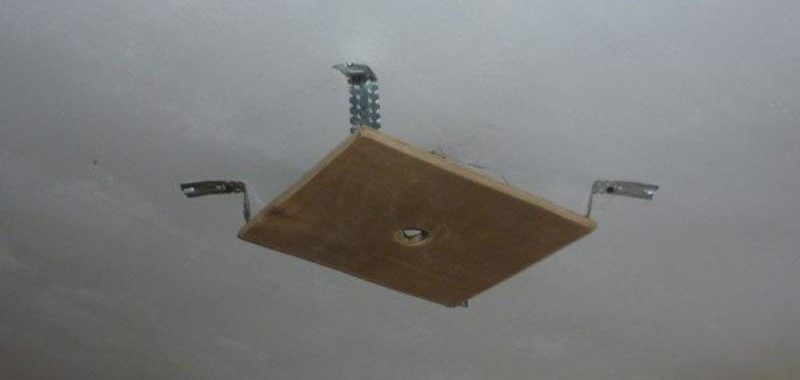
Mounted platform by means of U-shaped metal profiles, screwed to it with screws 10-15 mm long. By bending the U-shaped profiles the height of the cage is adjusted, determined by a painting thread stretched between the opposite walls under the ceiling. The ends of the thread are installed under the bottom border of the profile to which the stretch ceiling is mounted, and the platform must adjoin closely to the thread, but in no case go beyond its borders, otherwise the canvas in this area will protrude.
The thread in this case runs in the same place where the ceiling fabric will be located. Thus, the gap between the fabric and the platform should be minimal. The inclination of the embedded plane is adjusted by pushing or pulling the U-shaped fasteners to the center. It is necessary that the profile was set on a level in two horizontal planes, otherwise the canvas in the center will be skewed together with the chandelier.
After marking the points of attachment on the concrete, you need to drill holes in them for plastic dowels type "quick installation" and screw the platform with screws. The cable should extend into the central hole and hang down with a 25-30 cm margin. Before stretching the ceiling, all wires are coiled and placed on the platform.
After installing the embedding and mounting the canvas, it is necessary to cut a hole in it for the wiring and fasteners. This is done in the center of the fastener, which is determined by touch.
The procedure is mandatory because a canvas that is somewhat unevenly stretched can give a long tear arrow when a cut appears at the point of displacement. This fact also indicates the need to be extremely careful when working with a stretch ceiling to avoid accidentally damaging it with a sharp object.
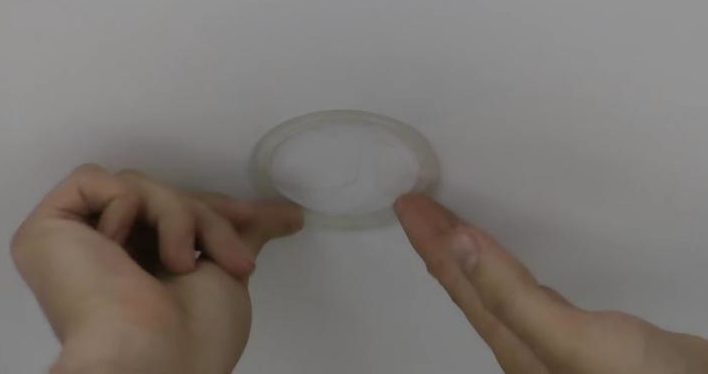
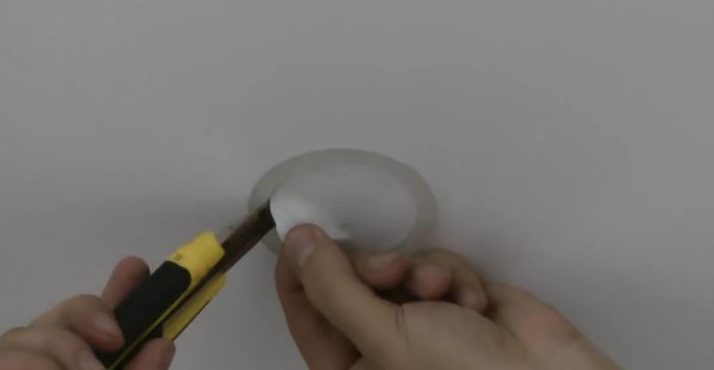
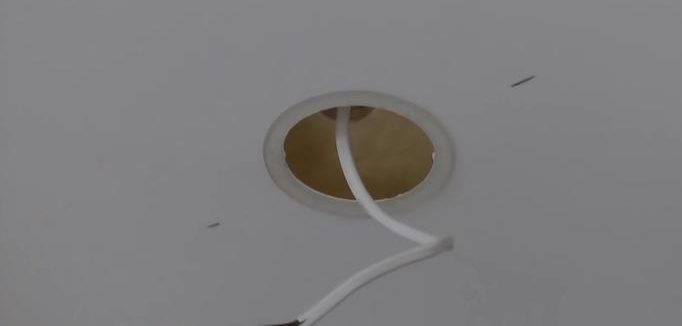
The ceiling is sensitive to the slightest point load and will sag over time under the weight of the objects lying on it. Therefore, it is necessary that the cable be attached to the main ceiling. Additional elements of the lighting fixture circuitry, such as chokes, ballaststransformers are placed on the inner surface of the platform.
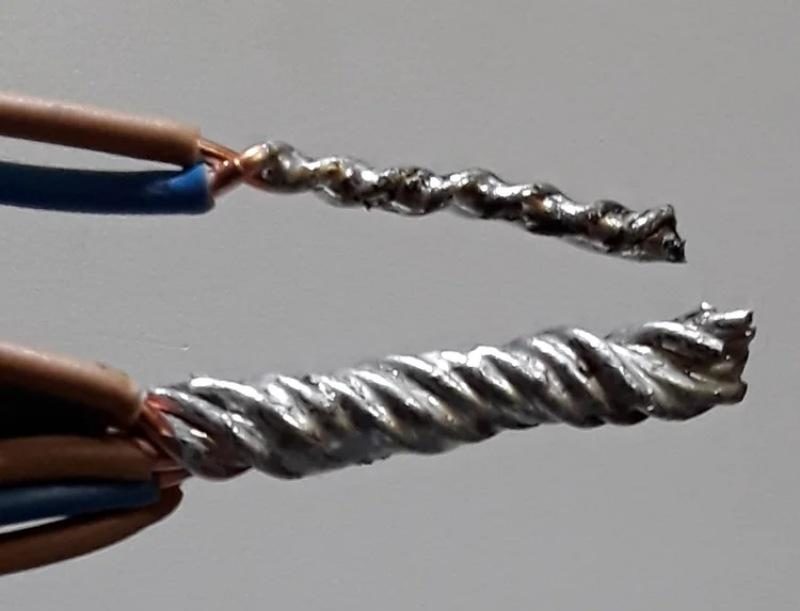
Wires must be connected before the lighting fixture can be mounted.
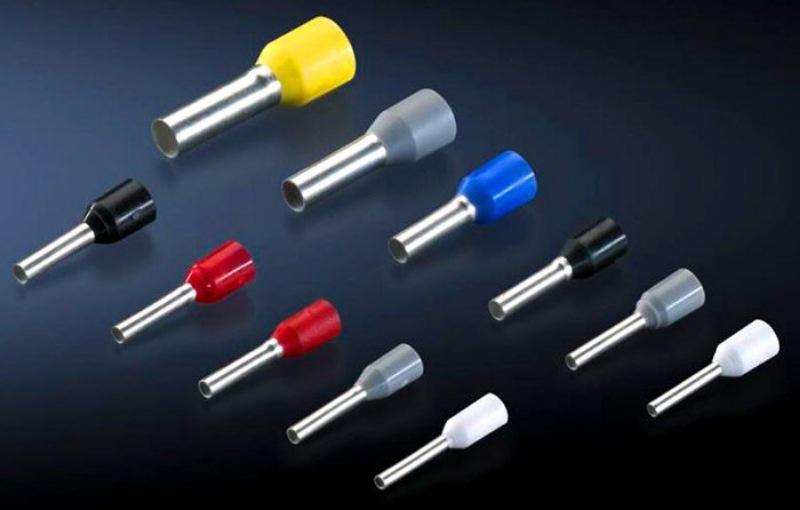
These measures will help prevent the connection from overheating due to poor contact.
Hook-and-loop fastening
There are several types of hook mounts for chandeliers:
- Standard mounting hook - most often comes with the fixture.The pin is driven to the inner surface of the embedding so that the concave part with the hook hangs over the hole.
- folding spring hook - used mainly for plasterboard structures, but is also used for stretch ceilings.The springs, when folded, are inserted into the hole in the cage and spread out in the free space.From below, the hook is clamped to the platform with a nut.
- hooks on the anchor and dowel.The anchor is fastened by unscrewing the wedge-shaped tip that spreads the side clips inside the hole.Dowel is installed according to the standard scheme of quick installation and is fixed by wedging the plastic clips with a screw with a hook at the end.
Do not need a platform, since they are attached to the main ceiling slab, in which a hole of the appropriate diameter is drilled with a hole punch.
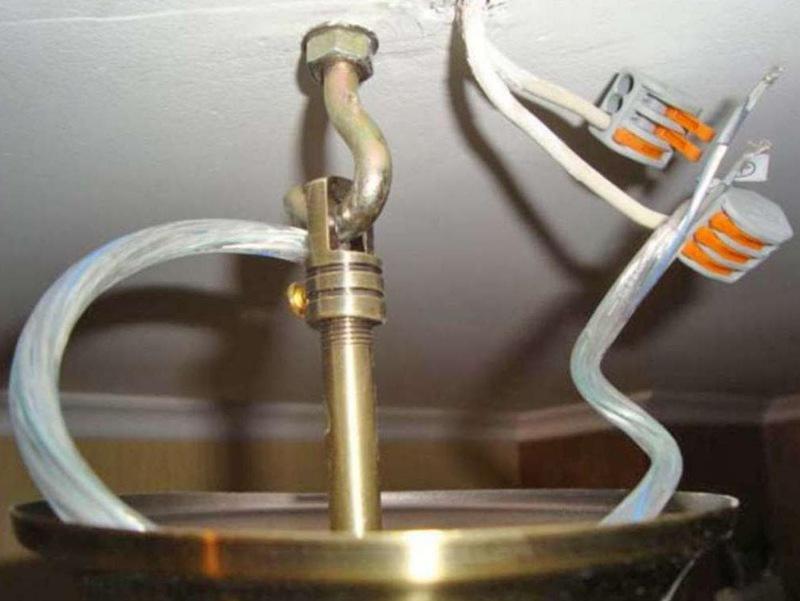
On the longitudinal mounting bar.
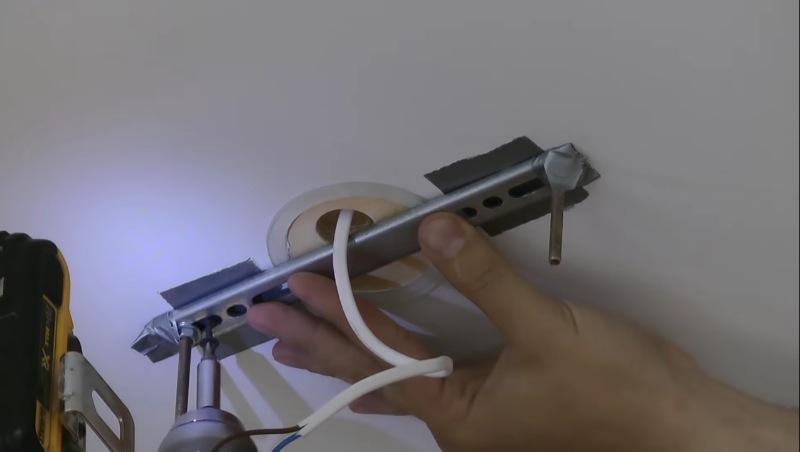
Before installing it, you need to set the distance between the bolts in the mounting holes, corresponding to the distance between the holes on the chandelier base. It is also necessary to protect the webbing from tearing by gluing reinforcing tape in places expected to be pierced with self-tapping screws and wrap the sharp edges on the strip with scotch tape.
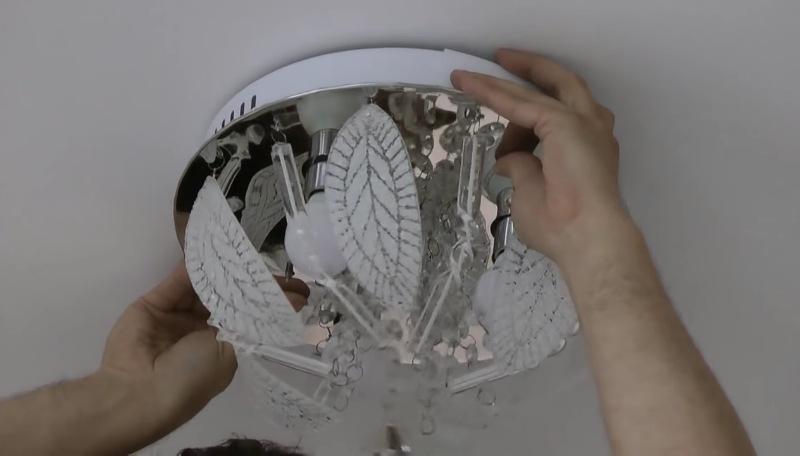
The position of the slat depends on the position of the chandelier, so its installation must be planned with the mounting in mind.
For slats with one central bolt is not critical.
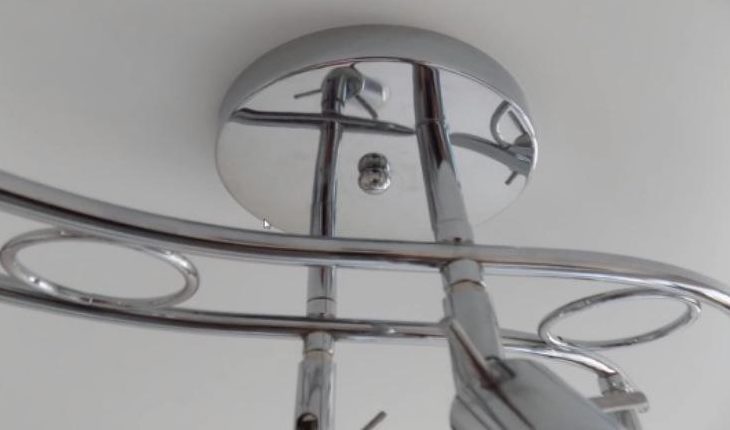
On the cross-shaped slat.
The fastener is generally similar to the single version, but it is fastened at four points.
The rules and features of installation are the same.
Through fixing
Represents a hole made by a perforator in the concrete slab. For this purpose, internal structural cavities in the floor slab are used. A pin or hook springs are placed in this cavity. This method is used when it is planned to hang extremely heavy chandeliers, weighing several tens of kilograms.
How to hang a chandelier on a mounted ceiling
If the ceiling is already stretched, and there is no embedded platform, then to install the light fixture is necessary according to the previously described scheme to cut a hole inside the tread ring, perforator drill a hole for dowels for the bar or anchor for a hook, and then install the fastener.
The only difference is that the bar will not be pressed to the platform, and hang on the screw heads. The base of the overhead or the hood of the pendant chandelier will be pressed only to the leaf, without a double-sided fixation. The degree of clamping is adjusted by changing the height of the bar by turning the screws or the hook in the dowel. The method is not as reliable, but allows you to do without dismantling the ceiling.
Decorating the mounting points
If it is a pendant chandelier, then most often for this purpose are used decorative caps that come with the light fixture.
In the case of overhead chandeliers, or those that have a flat base in the form of a plate, it is customary to recess under the cloth so that only the plafond protrudes out. Everything else is hidden in the space between the main concrete slab and the stretched canvas.
